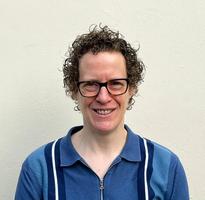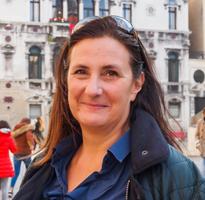In the heat of June we set off to explore two of the Central Europe's most popular cities; Vienna and Budapest. Whilst both are well-known destinations for discerning travellers, neither is an immediate choice for summer sunshine, though it was hard to believe as we stepped out of the plane in Vienna with the thermometer reading well over 30 degrees. We found our transfer driver's distinctive Kirker board as soon as we left the terminal, and suddenly the heat disappeared as we sunk into the air-conditioned saloon that was to whisk us off to the hotel.'Our chosen hotel was the K + K Palais, and as the elegant facade came into view behind the quiet, green of Rudolfplatz, it really felt like we were making a grand entrance. After checking into our light, comfortable rooms we headed out to see some of the sights in the warm afternoon glow.'The K + K Palais is located close to the famous Ringstrasse; built in the late 19th century to replace the old city walls, and to help connect wealthy and expanding Vienna with surrounding settlements. Today it is a leafy palace-lined boulevard, and has become an attraction in its own right. After wandering around part of this historical road we headed into the old town towards St Stephen's Cathedral, which stands out from the clean, pale stone of much of Vienna's architecture with its gothic grandeur and brightly tiled roof. The building looked resplendent in the summer sun, and with the carriages lined up patiently along the edges of the surrounding Stephensplatz, this could have been a scene from any point in the last 200 years.'This is far from the only part of the city which seems to belong a bygone era. From Stephensplatz we walked onwards to Vienna's district of palaces which now house various public buildings and an astonishing array of museums. From the Spanish Riding School at one end, through the Hofburg collection of museums, the Austrian National Library and Parliament off to one side, the whole area is a display of architectural majesty and cultural wealth.'At the far end of this zone sits the Museums Quarter. This collection of Baroque and modern buildings, along with the courtyards, cafés and outdoor spaces, make the complex one of the largest hubs for art and culture in Europe. There was a lovely relaxed atmosphere throughout, as groups of people enjoyed an afternoon coffee in the sun, or engaged with one of the many interactive installations in the grounds. We decided to make use of our Vienna Mastertickets, which are complimentary additions to all Kirker holidays to Vienna and can be used to gain entrance into both the Leopold Museum and the Kunsthistorisches Museum. We began at the Leopold. This is a very modern, airy gallery - the core of which is an astonishing collection of Austrian art from the late 19th century onwards, with highlights including the highly introspective final portraits of Richard Gerstl, and full-size recreations of the ferociously controversial Faculty series by Gustav Klimt. I particularly enjoyed the chronological biography of Egon Schiele, told through his own work.'With so much to see and do in the Museums Quarter, it is perhaps best to spread the use of the Masterticket over two days. After a refreshing night's sleep back at the K + K Palais (and a hearty breakfast including dark Austrian bread) we returned to the Museums Quarter to explore the Kunsthistorisches - translated literally as the 'Museum of Art History'. Another impressive building from the ourside, the museum faces a perfectly identical sandstone facade (the Natural History museum) across the manicured gardens of Maria-Theresien Platz. Entering into the cavernous lobby, the dark marble walls and abundant gold leaf immediately trigger a sense of being surrounded by immense cultural value, and much like being in a cathedral or the British Museum, voices are reduced to whispers. Of course, the artefacts inside do not disappoint.'Perhaps the most unusual part of the museum is the Kunstkammer. Re-opened in 2013 after major restoration work it is made up of the personal collections of various Austrian emperors since the 16th century - and many of the exhibits in amongst the eclectic mix are much older than that. Wandering from one room into the next there is a surprise and delight around every corner: glassware, carved ivory, cast bronze, jewellery of all descriptions - and plenty of gold. There is much more to the Kunsthistoriches than just the Kunstkammer. Wings dedicated to traditional portraiture, as well as Egyptian, Greek and Roman antiquities ensure that this is a hugely varied day out.'Walking around an institution like the Kunsthistoriches all morning is an excellent way to work up an appetite, and Vienna is the perfect city to find a place for a bite to eat. The museum itself has a café which comes highly recommended, but in the end we hopped around the corner to combine lunch with a traditional Viennese delicacy; the Sachertorte. The Sacher hotel is rightly famous as an opulent and luxurious place to stay when visiting the city, but its café is as popular with the locals as with the tourists. We had a delicious lunch of typical Austrian dishes whilst sat on the outdoor terrace, before rounding it off with a piece of the celebrated chocolate dessert. I was surprised learn that the Sachertorte pre-dates the hotel, which was established by the son of the cake's creator.''After tackling art, history and food, we ended our time in Vienna by exploring another immensely important cultural aspect of Vienna's story: music. Live music can be enjoyed in a number of prestigious venues throughout the city - most notably the grand, imposing State Opera House, and the beautiful Golden Hall of the Musikverein. The Kirker Concierge is able to obtain tickets for any performance at either of these two venues, and having taken advantage of this excellent service, Marcus and I donned our evening wear to enjoy the music of Austria's most famous son: Mozart. What followed was a greatest hits parade of all of Mozart's most recognisable themes. The performance was certainly geared towards tourists, however the enthusiasm of the orchestra and conductor - dressed in full period costume - was infectious, and the atmosphere magnified by the majesty of the Golden Hall. Of course, there are more serious performances throughout the year, including the Vienna Philharmonic's famous New Year's Day Concert. 'The next morning, after another relaxing night at the K + K Palais, our transfer driver arrived 10 minutes early to drop us off at Vienna's new Hauptbahnhof station to catch a train to Budapest. We were on the high-speed Railjet service, which takes about two and a half hours direct into the city centre, and our first-class tickets meant it was an extremely comfortable journey. As we pulled in to the station, it was immediately apparent that we were in a very different city. Whereas the station we had left behind was very modern, with sweeping lines of glass and steel, we arrived in an enormous old-fashioned stone building, with a faded grandeur, which we found to typify much of the architecture in the city.'Our driver found us immediately as we left the platform, and guided us through the busy station to the waiting car. Our one night in Budapest was to be spent at the recently-opened Aria; a strikingly modern, music themed hotel right in the centre of the city. A keyboard design on the floor leads guests into a glass-covered lobby, dominated by quirky furniture and a uniquely curvaceous grand piano. I recommend the 'Signature' rooms, each of which is dedicated to an individual musician in one of four disciplines - Classical, Contemporary, Opera and Jazz. 'We left the hotel almost as soon as we arrived, and headed out to see some of the city. The Aria is a stone's throw from the distinctive twin towers and dome of St Stephen's Basilica, decorated in deep red and gold on the inside. We were fortunate enough to hear the organist practicing Bach's Toccata and Fugue in D Minor as we wandered through, which certainly added to the experience! We then headed further into Pest, on the eastern bank of the Danube, past the majestic Hungarian State Opera house towards Heroes Square (whose iconic statues are flanked by two fine arts museums) and the green open spaces of the city park beyond. Situated in the middle of the park are the Széchenyi thermal baths, made up of a number of outdoor and indoor pools for relaxation and recuperation.'We took the metro to return to the centre of the city, which is something I recommend very highly for an authentic taste of Budapest. This is the second oldest underground railway system in the world (after that of London), and doesn't appear to have changed much since it opened. The trains on two of the four lines are ancient machines, and a 24-hour pass costs the equivalent of a couple of pounds. The tickets are also valid on the overground trams, which have been in operation even longer and are just as characterful.'Having returned to the centre of Budapest, there was time to have a quick look around the huge Central Market Hall, where stalls were piled high with fruit and vegetables, curious meats and jars of pickle. After a fantastic meal at a nearby Kirker-recommended restaurant (the Borbíróság, which buys all of its fresh ingredients from the Central Market), we returned to the Aria for an evening coffee on the magnificent rooftop terrace before turning in for the night.'We used our final day to explore the Buda side of the Danube. Whilst it is possible for the more adventurous visitors to take the steps up the hill to the castle complex at the top, we opted to take the funicular instead. There are two major institutions at the summit; the Hungarian National Gallery, and Buda Castle itself, which serves as a fascinating museum of the history of the city. The castle site was the seat of the region's rulers for several hundred years after the original building's completion in 1265, and elements of the original building still survive today. From the castle is a stunning view over the entirety of Pest across the river, with the spectacular Gothic parliament building taking centre stage. Despite having been built in 1904, it is still the tallest building in Budapest. I would have liked to have time to take a closer look - though that will have to wait until my next visit!'Despite great contrasts, these two cities are as enchanting as each other. Taken together they make a fantastic trip in a beguiling region of Europe.
Staff Review
Art, history and music in Vienna and Budapest
Speak to an expert - 020 7593 2288
Our expert reservations team regularly travel to a wide range of destinations to explore new cities, visit hotels and to research museums, galleries and restaurants so that we can offer the most up-to-date advice and recommendations.
Newsletter
Join our mailing list to receive the latest updates and travel inspiration.



























